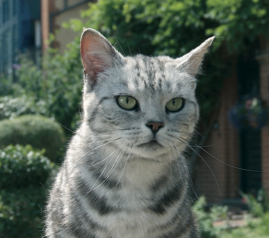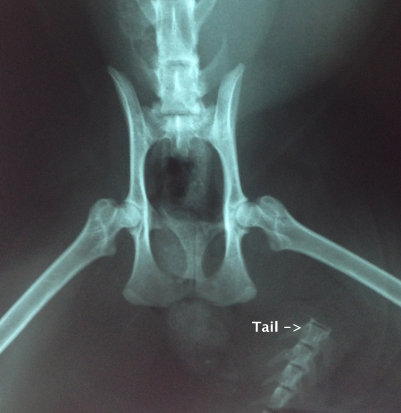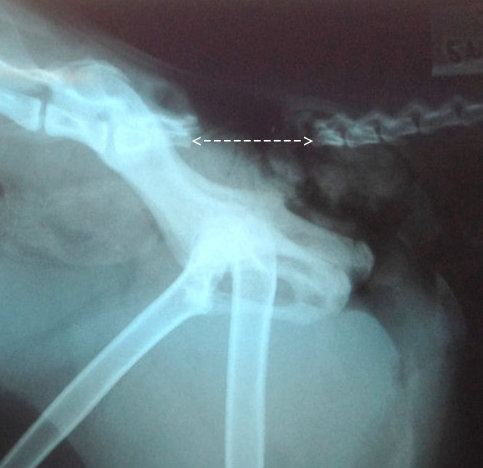News
Archive for June, 2012
Pet of the Month – July
by on June 29th, 2012
Category: Pet of the Month, Tags:
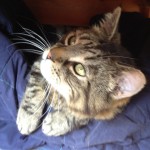 When Bruce’s usually good appetite stopped abruptly he was brought into the surgery. We found his mouth and oral cavity to be very inflamed in a manner suggestive of chemical burns.
When Bruce’s usually good appetite stopped abruptly he was brought into the surgery. We found his mouth and oral cavity to be very inflamed in a manner suggestive of chemical burns.
The most common cause of this is motor oil or fuel. When cats hide under cars their coats can easily become soiled, and in attempting to clean their coats through licking and grooming, these caustic compounds can severely damage the mucous membranes of the mouth and gullet, as they are ingested.
It was obvious that Bruce found swallowing far too painful to contemplate. He was given antibiotics, strong painkillers and a stomach tube was temporarily stitched in place up so that we could meet his nutritional requirements without him having to swallow. This allowed his gullet to recover and within a fortnight he was back to his usual cheeky self.
Check a lump Month
by on June 29th, 2012
Category: Special Offers, Tags:
Whats up doc?
by on June 29th, 2012
Category: News, Tags:
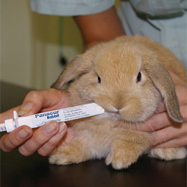 What’s up doc is the punch line for the world’s most famous bunny, but the stark reality is that this could be the exact question rabbit owners will be asking when their rabbits begin to deteriorate, seemingly without reason. One possible cause is E.cuniculi, a microscopic parasite to which more than 50 per cent of all domestic rabbits are thought to have been exposed.
What’s up doc is the punch line for the world’s most famous bunny, but the stark reality is that this could be the exact question rabbit owners will be asking when their rabbits begin to deteriorate, seemingly without reason. One possible cause is E.cuniculi, a microscopic parasite to which more than 50 per cent of all domestic rabbits are thought to have been exposed.
Infected rabbits can suffer a variety of illnesses including hind leg weakness, urinary incontinence, seizures, blindness and the sudden onset of head tilt, which is often mistaken for a stroke.
Not all rabbits show sign of disease and illness can flare up at any time. The parasite is spread by infected urine and from mother to babies, and some rabbits are outwardly healthy-looking carriers.
To control disease rabbits should be wormed 2-4 times a year. Contact us for for an appropriate worming product.
June Special Offers
by on June 1st, 2012
Category: Special Offers, Tags:
Kidney disease -‐ is my pet affected?
by on June 1st, 2012
Category: News, Tags:
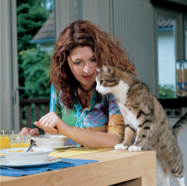 Thankfully most of our pets lead healthy active lives. However for some kidney disease can be a problem and it is particularly prevalent in older pets, especially cats.
Thankfully most of our pets lead healthy active lives. However for some kidney disease can be a problem and it is particularly prevalent in older pets, especially cats.
Dogs and cats have two kidneys and each kidney has several hundred thousand tiny filters called nephrons. These filter the blood, removing toxic waste products, salts and water which are then concentrated to form urine. Over time a proportion of the nephrons will disappear with age and not be replaced. Other factors such as toxins, infections or cancer may also destroy nephrons.
However, the kidneys have excess filtering capacity with the result that visible symptoms of kidney disease are not usually seen until roughly two thirds of the nephrons have been lost. If this stage is reached the filtering capacity falls and toxic wastes begin to accumulate in the blood. Common symptoms include increased drinking and increased urination, weight loss, muscle wastage, lack of appetite and lethargy.
Whilst kidney disease cannot be cured, a combination of specially formulated diets that reduce the workload of the kidneys, together with novel forms of medication, can often significantly improve the quality of life for affected pets. With regular veterinary check-‐ups the symptoms of kidney disease can often be detected at an early stage, before they become outwardly noticeable. So don’t delay – if your pet is showing any symptoms of kidney problems, please see us
for a check-‐up.
Pet of the Month – June
by on June 1st, 2012
Category: Pet of the Month, Tags:
Amy came into the surgery following a road traffic accident, very shocked, and with a deep wound around her bottom. Her tail was paralysed, and it was unclear whether she could use her back legs
Amy was anaesthetised for further assessment and radiographs revealed a fractured pelvis as well as a broken and displaced tail (see arrows on enclosed images). Her wound was cleaned and flushed and her tail was amputated. Now we had to wait and see if Amy‘s back legs would improve.
Luckily Amy did regain function in her back legs, but was faecally incontinent. Her urinary catheter was removed but her bladder still needed to be emptied manually – something that might continue for the rest of her life. This would require a huge commitment from Amy’s owners. Amy’s owners wanted to give her every chance and were willing to do everything possible. Because of her other injuries this normally pain free manipulation was painful but she remained compliant and purred throughout.
Amy was discharged with a guarded prognosis as the wound was very large, under tension, and at risk of contamination due to proximity to her bottom. Amy was to have cage rest for six weeks in order that her pelvic injuries might heal.
Unfortunately the skin on Amy’s back started to become necrotic and much of her skin in this region had to be surgically removed as the blood supply had been severely compromised in the car accident.
Since then Amy has visited us on a regular basis for Fentanyl patch changes (pain relief) and cleaning of the wound. Her prognosis continues to remain guarded and the wound remains open however it is clean and Amy is comfortable. Amy’s owners have been totally dedicated and committed to her care and Amy has been a really remarkable patient. All the staff at Fitzalan desperately hope that this story of such a delightful young cat has the happy ending it deserves.



